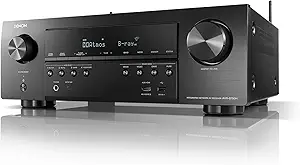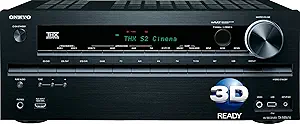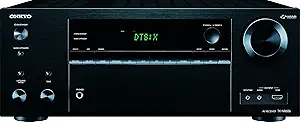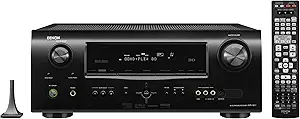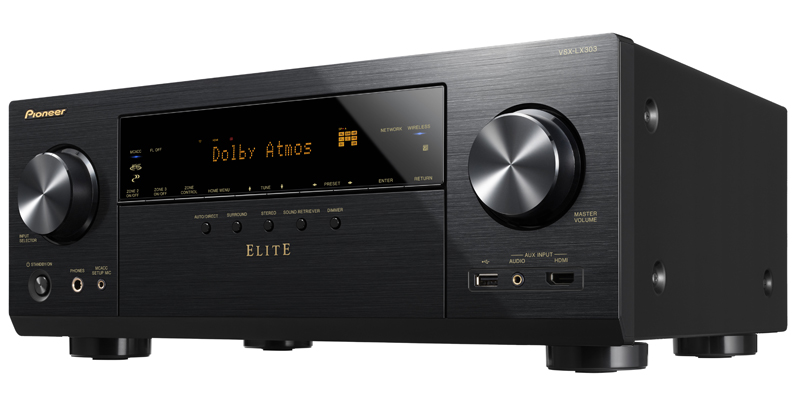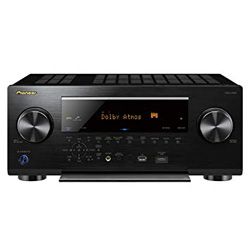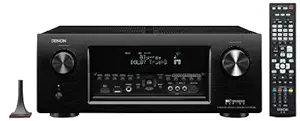Denon AVR-X8500H VS
Yamaha AVENTAGE RX-A3080

- Brand - Denon
- Updated_at - 2023-12-18 19:07:23
- USB - 1

- Brand - Yamaha
- Updated_at - 2023-12-18 19:07:23
- USB - 1
Pros & Cons
Denon AVR-X8500H
VSPros
- Great interface.
- Good connectivity.
Cons
- AVR-X8500H does not support multi-channel FLAC or DSD files, you have to play back these files from other devices.
- The HEOS app is not perfect and one should be careful to lower the volume before activating sound or you may blow your speakers.
Yamaha AVENTAGE RX-A3080
VSPros
- 3D pass-through feature available.
- The change between the inputs is quick and smooth.
- Strong build and features set.
- This receiver is incredible, easy setup, custom menus have been simplified to be much easier.
Cons
- No Three-zone capability feature.
Specifications
Groups
| Specification | Denon AVR-X8500H | Yamaha AVENTAGE RX-A3080 |
|---|---|---|
| Media Content Source | ||
| Network | ||
| Bluetooth | ||
| Usb-host | ||
| Additional Features | ||
| Apple Air-play Support | ||
| Advanced Sound Retriever (asr) Technology | ||
| Three-zone Capability | ||
| Smartphone Remote Control | ||
| A-b Speaker Switch | ||
| Dual-zone Capability | ||
| Pure Direct Mode | ||
| Auto Power Off | ||
| Bi-amplifying | ||
| Audio Return Channel (arc) | ||
| Amplifier | ||
| Output Power Per Channel | 150 W | 150 W |
| Total Output Power | 1500 W | 1350 W |
| Total Harmonic Distortion | 0.05 % | 0.06 % |
| Frequency Response | 20 Hz-20 kHz | 20 Hz-20 kHz |
| Output Impedance Per Channel | 4 Ohm | 4 Ohm, 6 Ohm |
| Sound Features | ||
| Surround Sound Effects | Front Stage Surround Advance | Virtual CINEMA |
| Audio D/a Converter | 32bit / 384kHz | 24bit / 192kHz |
| Digital Content Protection | HDCP 2.2 | HDCP 2.2 |
| Surround System Class | 13.2 channel | 9.2 channel |
| Audio Formats | ||
| Aiff | ||
| Aac | ||
| Wma | ||
| Wav | ||
| Mp3 | ||
| Flac | ||
| Apple Lossless | ||
| Built-in Decoders | ||
| Dolby Digital Plus | ||
| Dolby Atmos | ||
| Dts:x | ||
| Dolby True Hd | ||
| Dolby Surround | ||
| Connectivity Interfaces | ||
| Ieee 802.3u | ||
| Ieee 802.3 | ||
| Wi-fi | ||
| Bluetooth | ||
| Connector Type | ||
| Hdmi Inputs | 8 | 7 |
| Coaxial Digital Inputs | 2 | 3 |
| Phones | 1 | 1 |
| Optical Digital Inputs | 2 | 3 |
| Usb | 1 | 1 |
| Av Inputs | 3 | 9 |
| Subwoofer Outputs | 2 | 2 |
| Coaxial Digital Outputs | has not | has not |
| Optical Digital Outputs | has not | has not |
| Hdmi Outputs | 3 | 2 |
| Dimensions | ||
| Dimensions | 19 x 17.1 x 7.7 inches | 18.7 x 17.1 x 7.6 inches |
| Functions | ||
| Network Audio Player | ||
| Internet Radio | ||
| Digital Player | ||
| Power Device | ||
| Standby Power Consumption | 0.5 W | 0.1 W |
| Operational Power Consumption | 900 W | |
| Radio | ||
| Preset Station | 40 | 40 |
| Tuner Bands | AM/FM | AM/FM |
| Tuner Type | digital | digital |
| Clock | ||
| Sleep Timer | ||
| Built-in Clock | ||
| Built-in Display | ||
| Colour | black | black |
| Type | fluorescent | fluorescent |
| Signal Processing | ||
| Upscaling Via Hdmi | up to 4K | up to 4K |
| 3d Pass-through | ||
| Video Conversion/scaling | HDMI to HDMI scaling, analog to HDMI up conversion | HDMI to HDMI scaling, analog to HDMI up conversion |
| Hdmi Pass-through | up to 4K | up to 4K |
| General | ||
| Brand | Denon | Yamaha |

